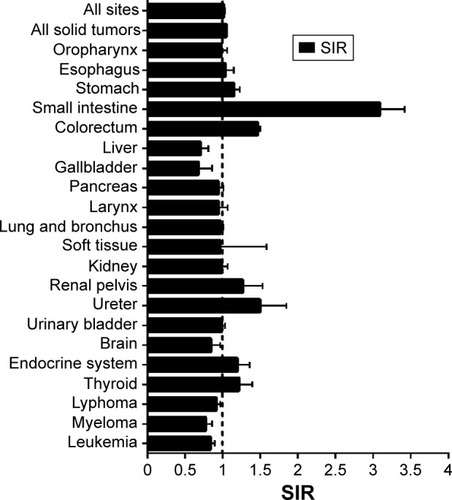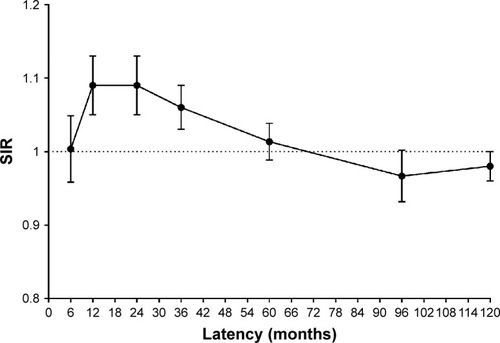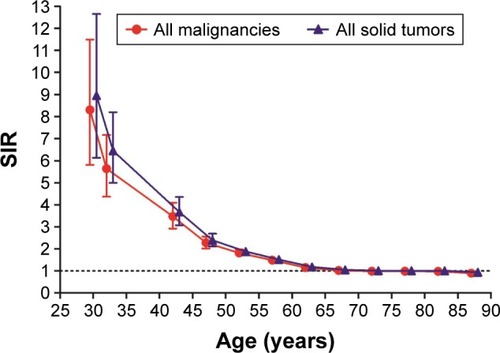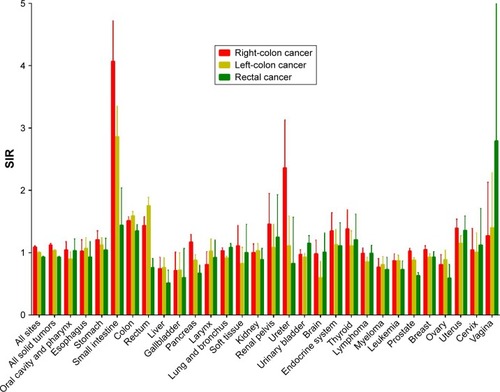Figures & data
Table 1 Baseline characteristics of patients with subsequent primary malignancies development after colorectal cancer
Figure 1 Site distribution of subsequent primary malignancies.
Abbreviation: SIR, standardized incidence interval.

Figure 2 Risk varied by latency for subsequent primary malignancies in all sites.
Abbreviation: SIR, standardized incidence interval.

Figure 3 Risk varied by age for subsequent primary malignancies of all sites and all solid tumors.
Abbreviation: SIR, standardized incidence interval.

Figure 4 Risk varied by sex for subsequent primary malignancies in different sites.
Abbreviation: SIR, standardized incidence interval.

Figure 5 Risk varied by subsites of prior colorectal cancer for subsequent primary malignancies in different sites.
Abbreviation: SIR, standardized incidence interval.

Table 2 Risk of subsequent primary malignancies among colorectal cancer survivors stratified by sex, age, and prior tumor location
Table S1 Risk of subsequent primary malignancies grouped by radiotherapy among patients with rectal cancer
Table S2 Risk of subsequent primary malignancies grouped by year of prior colorectal cancer diagnosis
Table S3 Risk of subsequent primary malignancies grouped by race among patients with prior colorectal cancer
Table S4 Risk of subsequent primary malignancies grouped by SEER summary stage of prior colorectal cancer
Table S5 Risk of subsequent primary malignancies grouped by grade of prior colorectal cancer
